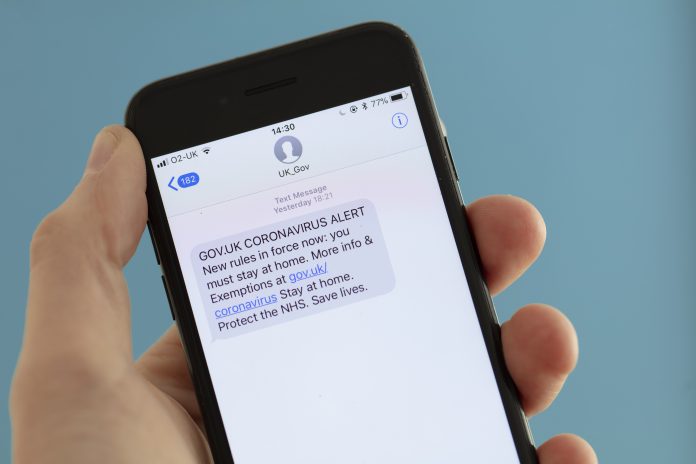Richard Stephenson, CEO of YUDU, discusses why we can only successfully deliver critical public service information using the power of technology
As discussions begin to turn towards easing lockdowns across the world, the stark difference in strategies for recovering from the crisis has become abundantly clear.
No two countries, industries, or even companies have published the same plans, which in turn has led to widespread debate. For instance, the UK government is considering staggering work times in order to avoid public transport becoming overcrowded, while Spain has opted to make face masks compulsory for passengers. In the hospitality sector, Lithuania’s capital Vilnius is planning to turn its public spaces into open-air cafés to help businesses reopen, but in Italy, only takeaway service will be immediately available.
At a localised level, the UK Government has repeatedly said it does not favour the idea of different regions emerging from the lockdown at different times. However, it appears to now be reconsidering, with towns, regions and even nations facing specific lockdowns, if local coronavirus spikes are detected.
As a result, the Government’s new central message of “stay alert, control the virus, save lives” is already resplendent with caveats and clauses, depending on where you work and what type of lifestyle you lead. Whether you agree or disagree with the government’s measures, there’s little doubt that a country-wide approach was needed to flatten the curve. Now, however, we’re transitioning to a phase in which local governments need the flexibility and freedom to meet the needs of its population, which they understand best.
During the pandemic so far, the traditional communications channels used by local councils have proved unable to address the information-sharing challenges posed by COVID-19 and provide citizens with up-to-date and accurate information. This problem has been heightened by staff being furloughed or taking sick leave, leaving councils ill-prepared to rise to the unprecedented challenge. With the frequency and reach of local papers falling every year, and notice boards in council buildings rendered obsolete by the lockdown, local communications chiefs and Council heads are rapidly searching for solutions.
Is tech the answer?
So far, messages from Whitehall have not been thoroughly communicated in advance to local authorities. This has unintentionally made the task more difficult, with delays and changes in policymaking clear communications and coordination all the more difficult for city and county councils. Consequently, local residents are sometimes struggling to understand what is being asked of them, and how they can be supported.
As the response to the pandemic transitions to the next phase, the ability to be flexible and adaptable is of paramount importance. Technology, and more specifically crisis communications platforms, can really support the task. Crisis communications platforms enable local authorities to create trusted, reliable and up-to-date sources of information which can be altered as regularly as necessary.
For public service communicators, their role is not just about amplifying central messages, but also connecting audiences with crucial and potentially lifesaving information about how these messages affect the local population. We must enable these communicators to create and maintain open lines of communications with residents, with dedicated phone lines which offer localised voice messages.
We recently began working with Ross-on-Wye Town Council, an authority which services a large community of retired people, many of whom are vulnerable and isolated. Ross Community Development Trust opted to use the phone-based message management system from our product Hotline to enable vulnerable people to listen to up-to-date information and leave messages requesting support.
Because Hotline can be accessed remotely, those tasked with picking up the messages were able to work from home and could action requests while at the same time maintaining social distancing. This is something they couldn’t have done had they attempted to use the council switchboard, or even the IT Suite made available to the Community Development Trust. In using the solution, vulnerable residents could request help in the most seamless way possible, helping the council maintain its excellent service.
What’s more, they were able to access this information in many languages. Whitehall’s messages have so far only been delivered in English, and have come under criticism from campaigners for not featuring a British Sign Language Interpreter. Critical information is therefore not reaching every corner of the community that it needs to, leaving many confused, concerned and even panicked. Voice messages on crisis platforms such as Hotline can be converted into 22 different languages, saving time in recording and updating messages into many different languages. For ethnically diverse towns and cities, delivering a personalised service is integral to success.
The time to innovate is now
There are many grandiose statements about the pandemic, but we truly are at a crucial time for local governments to hold onto the trust of their citizens. According to a number of reports, faith in the national response to the coronavirus is dwindling. Conveying a clear message and plan is one way to salvage the situation and avoid unrest.
In order to do so, councils must not be afraid of the new and unknown. Local governments often aren’t credited enough for their pioneering attitude. Contrary to the common view that youthful East-London-based start-ups began the remote working boom, it’s the public sector that went agile first. As desk space shrank and financial resources dwindled, councils reacted quickly by equipping staff with the technology and connectivity to work from almost anywhere, which has paid dividends as the pandemic’s grip tightened. Crisis communications platforms are the next piece of this ongoing puzzle.
With the effects of COVID-19 likely to be felt for months and years to come, now is the time for local authorities to embrace technology and ensure no citizen is left behind through a lack of communication.











